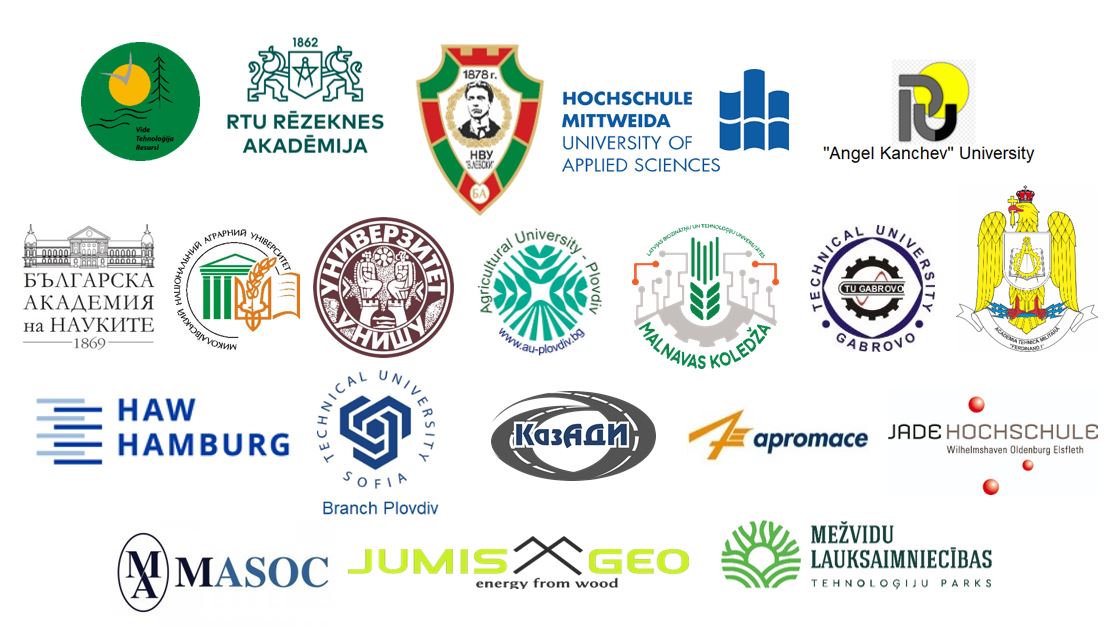EVALUATING THE QUALITY OF E-LEARNING MATERIAL
##manager.scheduler.building##: Atbrivosanas aleja 115, k-4 (Faculty of Engineering)
##manager.scheduler.room##: Room 111
Last modified: 05.06.2017
Abstract
Keywords
References
[1] Latvijas Nacionālā standartizācijas institūcija „Latvijas standarts”, “Informācija un dokumentācija – Vārdnīca,” (Information and documentation – Vocabulary), standarts LVS ISO 5127:2005, 2005. (In Latvian)
[2] J. Dzelme, A. Kapenieks, M. Upmale, L. Jermolajeva, V. Vikmane, A. Rengarte, I. Buligina, B. Žuga, Dz. Tomsons, S. Gibže un A. Škute, Tālākizglītības kvalitātes vērtēšanas rokasgrāmata. (Quality Assessment Guide of Distance learning) Rīga: Lielvārds, 2001, 32.lpp. (In Latvian)
[3] U.-D. Ehlers, “Quality in e-learning from a learner’s perspective,” European Journal for Distance and Open Learning, [Online]. Available: http://www.eurodl.org/materials/contrib/2004/Online_Master_COPs.html . [Accessed January 16, 2017].
[4] E. Bratengeyer, A. Bubenzer, J. Jäger und G. Schwed, eLearning Qualitäts-Evaluationstool. (E-learning quality evaluation tool ) Books on Demand, 2015. (In German)
[5] E. Bratengeyer and G. Schwed, “eLQe: A Cool Tool for Simply Evaluating Your E-learning Course Development,” In: Proceedings of the Eighth International Conference on E-Learning in the Workplace, 2016, New York, USA. [Online]. Available: https://www.icelw.org/proceedings/2016/ICELW2016/Papers/Bratengeyer_Schwed.pdf [Accessed February 6, 2017].
[6] Oxford Dictionary of English, Oxford University Press: Oxford, 2010, 2112 p.
[7] A. Geske un A Grīnfelds, Testu teorijas elementi izglītībā. (Test theory in education) LU projekta „Profesionālajā izglītībā iesaistīto vispārizglītojošo mācību priekšmetu pedagogu kompetences paaugstināšana” materiāls, vienošanās Nr.2009/0274/1DP/1.2.1.1.2/09/IPIA/VIAA/003, LU reģistrācijas Nr.ESS2009/88, 2010. [Online]. Available: http://profizgl.lu.lv/pluginfile.php/22519/mod_resource/content/0/AGrinfelds_AGeske/Testi_izglitibaa_final2.pdf [Accessed January 16, 2017]. (In Latvian)
[8] L. A. Wingate, “The Evaluation Checklist Project: The Inside Scoop on Content, Process, Policies, Impact, and Challenges,” Nov 4, 2002, [Online]. Available: https://wmich.edu/sites/default/files/attachments/u350/2014/insidescoop.pdf. [Accessed February 6, 2017].
[9] H. M. Niegemann, S. Domagk, S. Hessel, A. Hein, M. Hupfer und A. Zobel, Kompendium multimediales Lernen. (Compendium of multimedial learning) Heidelberg: Springer, 2008, 81 p. (In German)
[10] G. D. Rey, E-Learning: Theorien, Gestaltungsempfehlungen und Forschung. (E-learning: theories, design recommendations and research) Hogrefe AG: Bern, 2009. (In German)
[11] Swedish National Agency for Higher Education “E-learning quality. Aspects and criteria for evaluation of e-learning in higher education,” Report 2008:11R, 2008.
[12] A. Usoro and G. Majewski, “Measuring Quality e-Learning in Higher Education,” International Journal of Global Management Studies, vol.1, pp. 1-32, 2009.
[13] E. Bratengeyer, “Entwicklung eines Web-basierten Tools zur eLearning-Qualitätsevaluation” (Development of a web-based tool for eLearning quality evaluation) Hamburger eLearning-Magazin, no. 17, S. 28-31, Juli 2015. [Online]. Available: https://www.uni-hamburg.de/elearning/hamburger-elearning-magazin-14.pdf. [Accessed February 6, 2017]. (In German)
[14] D. Dinevski, J. Jakončič, M. Lokar and B. Žnidaršič, A model for quality assessment of electronic learning material: Proceedings of the ITI 2010, 32nd International Conference on Information Technology Interfaces, pp. 343-348, 2010.
[15] C.-Ch. Fey, Kostenfreie Online-Lehrmittel: eine kritische Qualitätsanalyse. (Free online teaching material: a critical quality analysis) Bad Heilbrunn: Klinkhardt, 2015, 320 S. (In German)
[16] C. Pappas, “The Ultimate eLearning Course Design Checklist,” April 10, 2014. [Online]. Available: http://elearningindustry.com/the-ultimate-elearning-course-design-checklist. [Accessed February 6, 2017].
[17] Z. Krajcso, “Classification and quality criteria for Open Educational Resources in the field of foreign language learning,” Journal of Language and Cultural Education, vol. 4, Iss. 1, p. 48–59, 2016.
[18] D. Madden, “17 elements of good online courses,” Aug 3, 1999. [Online]. Available: https://www.honolulu.hawaii.edu/facdev/guidebk/online/web-elem.htm. [Accessed January 16, 2017].
[19] A. Sperl, „Bewertung der Qualität von Lehrmaterialien,“ (Assessment of the quality of e-learning materials) Dec.8, 2015. [Online]. Available: https://alexandersperl.wordpress.com/2015/12/08/bewertung-der-qualitat-von-lehrmaterialien/ [Accessed February 6, 2017]. (In German)
[20] U. Grabe, L. Ionica, K. Kunze, P. Schneider und A. Schulz, „Entwicklung eines Bewertungsverfahrens zur Vergabe des @ward Preis für multimediales Lehren und Lernen an der Universität Halle,“ (Development of an evaluation procedure for awarding the @ward Prize for multimedia teaching and learning at the University of Halle) Hamburger eLearning-Magazin, no.17, S. 37-39, Juli 2015. [Online]. Available: https://www.uni-hamburg.de/elearning/hamburger-elearning-magazin-14.pdf. [Accessed February 6, 2017]. (In German)
[21] C. Schoor and H. Körndle, “Checklist for a Didactically Sound Design of eLearning Content,” no. 29, June 2012. [Online]. Available: https://www.scribd.com/document/99490612/Cornelia-Schoor-Elearning-Papers-2012-checklist-for-a-Didactically-Sound-Design-of-Elearning-Content. [Accessed February 6, 2017].
[22] R. C. Clark and C. Lyons, Graphics for Learning: Proven Guidelines for Planning, Designing, and Evaluating Visuals in Training Materials, 2nd Edition, San Francisco, CA: Pfeiffer, 2010, 420 p.
[23] Swedish Civil Contingencies Agency, “Developing Training Material Guide,” 2012. [Online]. Available: https://www.msb.se/RibData/Filer/pdf/26433.pdf. [Accessed February 6, 2017].
[24] E. J. Davidson, Evaluation Methodology Basics The Nuts and Bolts of Sound Evaluation Thousand Oaks, CA: SAGE Publications, 2005, 280 p.
